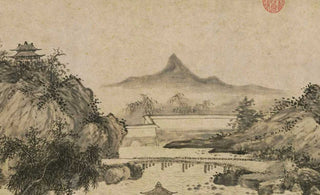
In the heart of the majestic city of Beijing, lies a treasure trove of wonders that encapsulate the rich history and artistic brilliance of imperial China. Known as the Imperial Beijing Eight Wonders, these marvels are a testament to the cultural legacy that has captivated enthusiasts, collectors, and artists for centuries. Join us on a journey as we delve into the elegance of each wonder, discovering the unique charms that have stood the test of time.
The Forbidden City: A Palatial Marvel
The Forbidden City, located in the heart of Beijing, China, stands as an awe-inspiring testament to imperial grandeur and architectural brilliance. This palatial marvel, also known as the Palace Museum, served as the Chinese imperial palace from the Ming Dynasty (1368-1644) to the end of the Qing Dynasty (1644-1912). Spanning an impressive 180 acres and boasting over 9,000 rooms, the Forbidden City is the world's largest palace complex.Constructed from 1406 to 1420, the Forbidden City is a masterpiece of traditional Chinese palatial architecture, characterized by its golden roofs, crimson walls, and intricate wooden carvings. The layout of the palace is meticulously planned, reflecting the ancient Chinese principles of spatial harmony and Feng Shui. As visitors pass through the towering Meridian Gate and cross the vast courtyards, they are transported back in time to an era of imperial rule and dynastic splendor.
Each building within the Forbidden City serves a specific purpose, from the Hall of Supreme Harmony, where grand ceremonies took place, to the Imperial Garden, a tranquil retreat adorned with ancient trees and beautiful pavilions. The architectural details, including mythical creature sculptures and imperial yellow tiles, underscore the symbolic significance of each structure. The Forbidden City is not only a physical manifestation of Chinese imperial power but also a repository of the nation's rich history and cultural heritage.Furthermore, the Forbidden City's significance extends beyond its architectural magnificence. It houses an extensive collection of artifacts and treasures, including rare paintings, ceramics, and imperial artifacts. The Palace Museum within the Forbidden City showcases over a million artifacts, offering a comprehensive insight into the lives of Chinese emperors and the imperial court.
The Summer Palace and The Temple of Heaven
Nestled beside the tranquil Kunming Lake, the Summer Palace is a testament to the harmonious relationship between nature and architecture. Explore the meticulously landscaped gardens, adorned with pavilions and bridges that reflect the essence of classical Chinese aesthetics. The Summer Palace invites you to experience the poetic beauty of imperial retreats, where emperors sought solace amidst the serenity of the natural world.
A celestial sanctuary, the Temple of Heaven stands as an architectural masterpiece dedicated to imperial rituals and cosmic harmony. The circular design of the Hall of Prayer for Good Harvests echoes the ancient belief in the cyclical nature of the universe. As you stroll through the vast temple complex, you can feel the connection between heaven and earth that permeates the imperial architecture, creating an aura of timeless serenity.
Nestled at the foot of Tianshou Mountain, the Ming Tombs serve as the final resting place for thirteen emperors of the Ming Dynasty. The grandeur of these tombs reflects the profound respect for ancestors and the afterlife. Walk along the Sacred Way, flanked by imposing stone sculptures, and marvel at the majestic architecture that pays homage to the enduring legacy of imperial rule.
Stretching across the northern frontier of China, the Great Wall stands as a symbol of strength and resilience. Built to protect against invasions, this colossal structure winds its way through rugged landscapes, offering breathtaking vistas of the surrounding countryside. The Great Wall not only showcases the engineering prowess of ancient China but also embodies the unwavering spirit that has defined the nation throughout its history.
The Old City of Beijing: Timeless Alleys and Hutongs
Embarking on a journey through the labyrinthine alleys and historic hutongs of Beijing's Old City is akin to stepping into a living canvas that beautifully encapsulates the essence of traditional Chinese life. These narrow, winding pathways, lined with ancient courtyard homes, have witnessed the ebb and flow of centuries, preserving the city's cultural tapestry. The Old City's hutongs, or traditional neighborhoods, are a microcosm of Beijing's rich history, offering a glimpse into a bygone era.
As you navigate these narrow alleys, you are transported into a world where time seems to stand still. The traditional courtyard residences, known as siheyuans, with their intricately carved wooden doors and quaint courtyards, reflect the architectural elegance of ancient China. The air is filled with the nostalgic charm of street vendors peddling traditional snacks, the rhythmic clatter of mahjong tiles in communal spaces, and the laughter of children playing in the courtyards.
Moreover, the hutongs serve as a vibrant social hub, fostering a sense of community among the residents. Small teahouses and family-owned shops dot the alleys, offering authentic glimpses into daily life. Each corner unveils hidden gems, from historic landmarks like Bell and Drum Towers to hidden temples that whisper stories of dynasties' past.Preservation efforts have been made to protect these cultural treasures, allowing visitors to immerse themselves in the living history of Beijing. Renovated courtyard homes now house boutique hotels, providing an opportunity to experience traditional living with a touch of modern comfort. Exploring the Old City's hutongs is not merely a stroll through historic alleys; it's a journey back in time, an intimate encounter with the heartbeat of Beijing's cultural heritage. The Old City's hutongs stand as living testimonials to the resilience of tradition in a rapidly evolving metropolis, inviting all who wander into their embrace to witness the timeless beauty of Beijing's past.
Beihai Park and The Grand Canal
Beihai Park, a serene oasis in the heart of Beijing, unfolds as a picturesque landscape where imperial grandeur meets natural beauty. This historic park, dating back to the 11th century, served as a royal garden during various dynasties, and its vast expanse of water, adorned with traditional architecture and lush greenery, creates a harmonious blend of nature and culture. The centerpiece of the park is the stunning White Dagoba, an iconic Tibetan-style stupa perched atop Jade Flower Island, offering panoramic views of the surrounding scenery. The park's meandering paths, ancient pavilions, and intricately designed bridges evoke a sense of tranquility, inviting visitors to wander and explore the rich history embedded in its every corner.
Moving southward, The Grand Canal, a colossal waterway snaking through eastern China, stands as a testament to ancient engineering prowess and cultural exchange. Stretching over 1,100 miles, it connects Beijing in the north to Hangzhou in the south, passing through picturesque landscapes, historic towns, and bustling cities. Constructed over various dynasties, the canal served as a vital lifeline for transportation of goods and cultural exchange. Its banks are adorned with traditional architecture, showcasing a living tapestry of Chinese history. Today, boat rides along the Grand Canal provide a unique perspective on the nation's heritage, allowing travelers to witness the seamless integration of past and present along this historic waterway. Together, Beihai Park and The Grand Canal offer immersive glimpses into China's rich cultural and natural heritage, inviting visitors to explore the diverse layers of the country's storied past.
The Imperial Beijing Eight Wonders stand as a living testament to the enduring elegance and timeless charm of classical oriental art. From the majestic halls of the Forbidden City to the tranquil waters of the Grand Canal, each wonder tells a story of imperial grandeur, architectural brilliance, and a deep connection to the cultural roots of China. As we explore these marvels, we not only discover the unique charms embedded in each structure but also gain a profound appreciation for the rich tapestry of history that continues to captivate enthusiasts and artists alike.





























